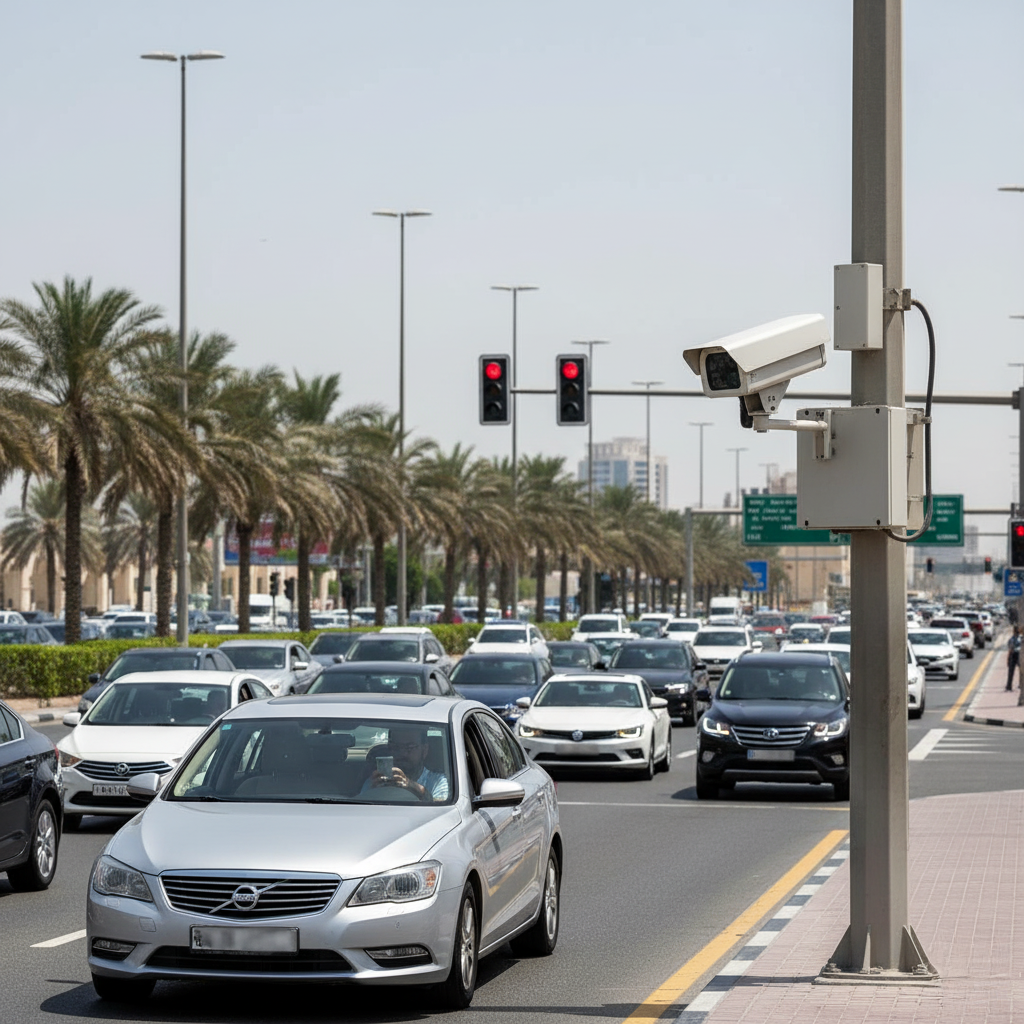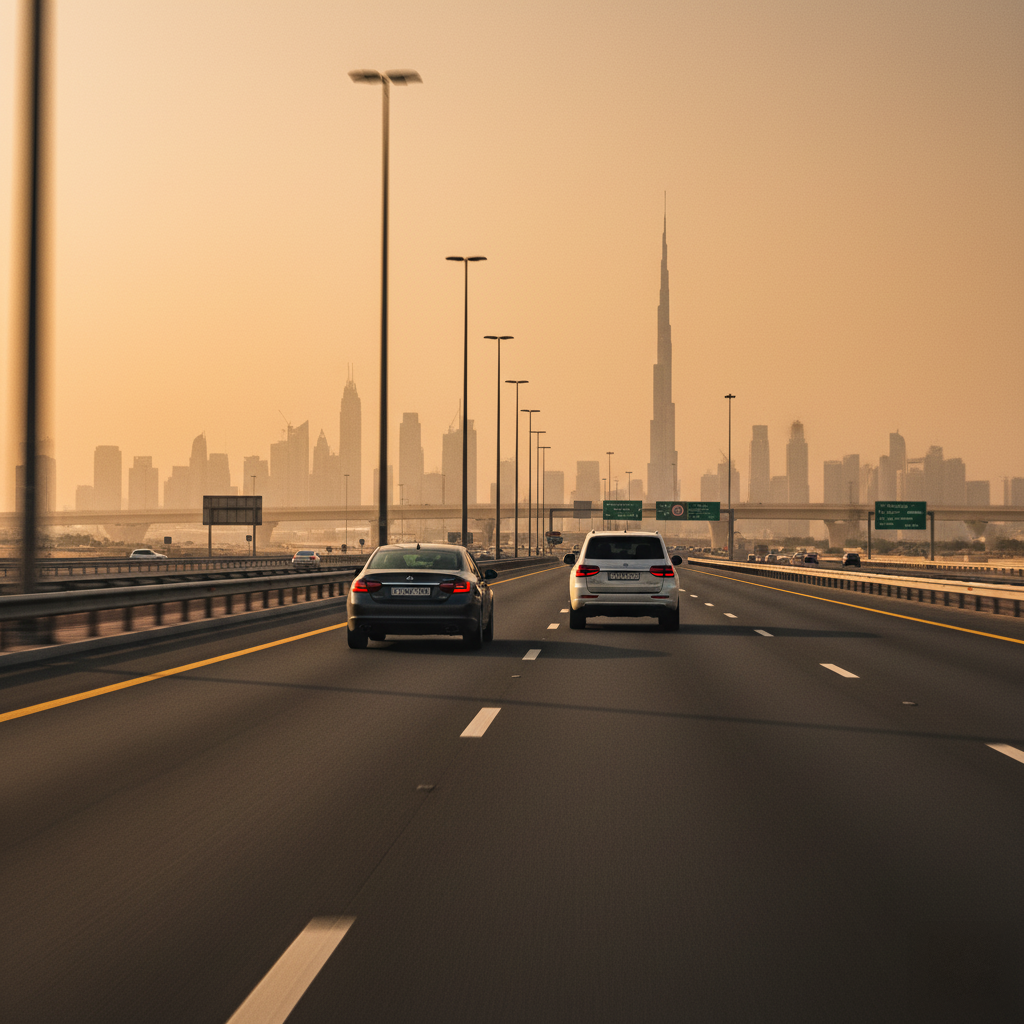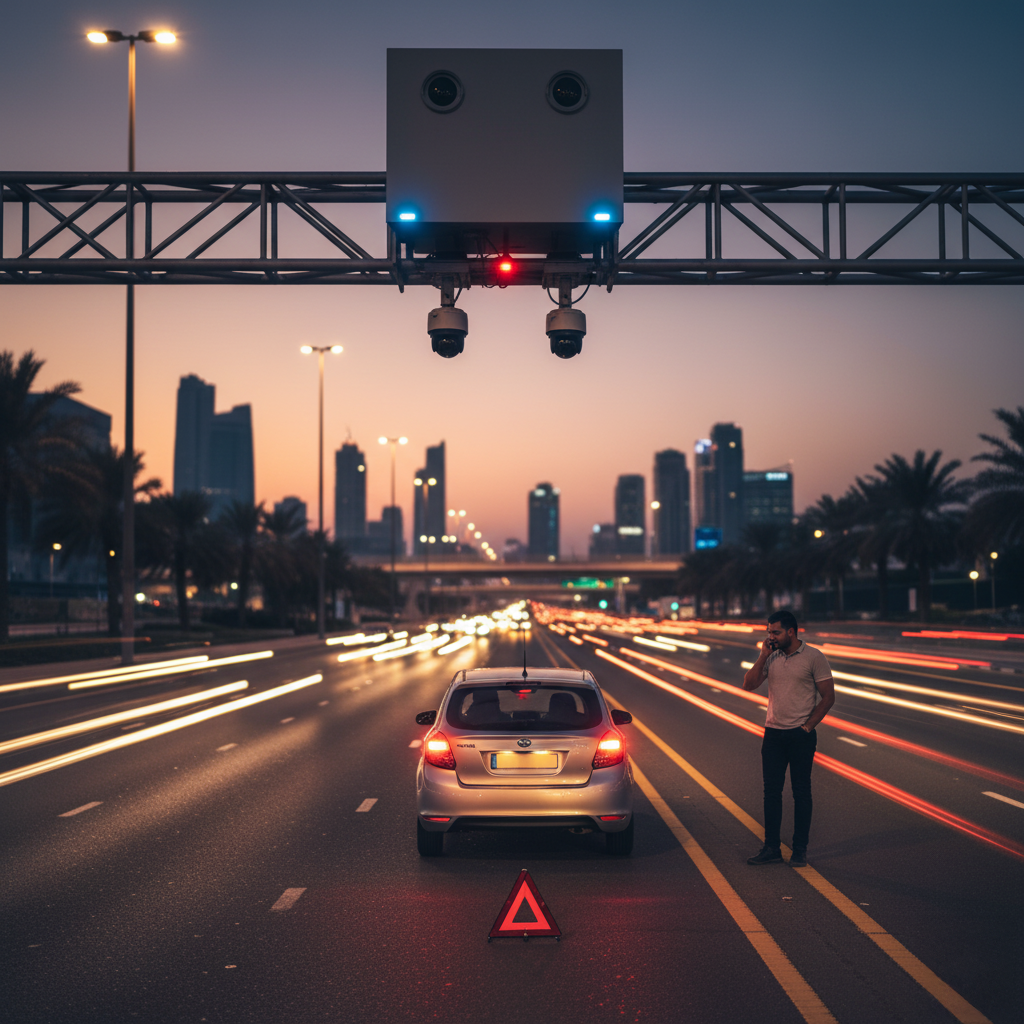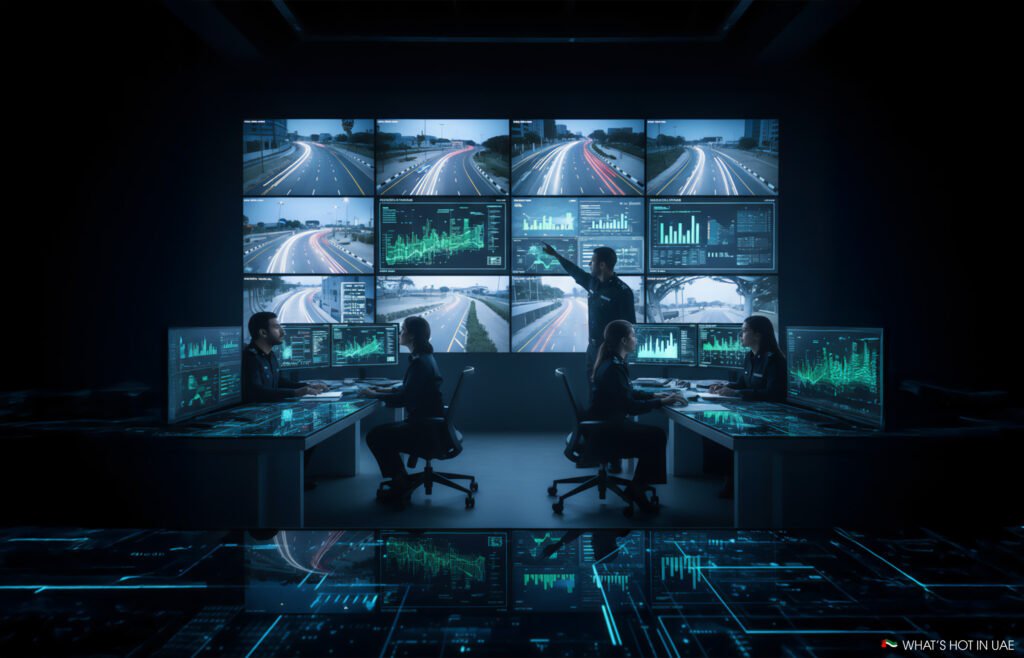Something fundamental shifted on Dubai’s roads this week, and most drivers haven’t noticed yet. The Dubai Police AI traffic system is now watching live feeds across the city’s busiest corridors. It’s scanning thousands of camera frames every second, flagging dangerous behaviour without waiting for a patrol car to arrive. Five specific violations now trigger automatic detection: not wearing seatbelts, using phones while driving, blocking traffic flow, stopping in live lanes, and tailgating. This isn’t a trial anymore. The system is operational, the cameras are rolling, and the fines are coming through standard channels. If you’ve been loose about buckling up or checking WhatsApp at red lights, your grace period just ended.
Why Dubai Police Built This Now
Road policing used to run on patrols, reports, and reactive responses. Officers would spot violations if they happened to be in the right place at the right time. The Dubai Police AI traffic system changes that completely. It reads patterns across entire corridors and junctions simultaneously, catching repeat hotspots before they cause pile-ups. Cameras capture video continuously, algorithms scan each frame for risky behaviours, and the system timestamps events while linking them to number plates. It bundles the evidence for back-office review, and notifications follow existing fine and points rules. Humans still verify final cases before issuing penalties, so there’s no fully automated punishment loop yet. But the detection happens in real time, and the net is now much, much wider.
The Five Behaviours It’s Hunting
Not wearing a seatbelt might feel like a personal choice until you see crash data. Using a mobile phone while driving causes drifting, phantom braking, and split-second delays that turn near-misses into collisions. Obstructing the smooth flow of traffic creates bottlenecks that ripple backwards for kilometres. Stopping in a live lane without valid cause blocks emergency vehicles and forces dangerous swerves. Tailgating multiplies small mistakes into rear-end crashes that close entire carriageways during peak hours. These five behaviours drive injuries, gridlock, and the angry horn symphonies everyone hates. Cut them, and you cut risk across the network without building a single new lane.

How It Actually Works
The technology isn’t magic, but it is impressively fast. Cameras positioned across high-risk zones feed video into computer vision models trained to recognise specific behaviours. The system spots an unbuckled driver, a phone held to an ear, or a car sitting dangerously close to the bumper ahead. It timestamps the event, captures the plate, and creates an evidence package complete with video clips and location data. That package goes to a back-office team who verify the violation meets legal standards before any fine gets issued. You’ll receive a message or fine notification exactly as you do now, showing time, place, and the recorded behaviour. You can review the evidence package online, and disputes still follow standard appeal routes through official channels.
Where You’ll Feel It First
Expect intense focus on Sheikh Zayed Road, key interchanges, and busy arterials where speed meets volume. These are the corridors where small mistakes compound into major incidents fastest. School zones and mall exits will follow after calibration periods, and deployment timings may shift based on season, weather patterns, and special events. The Dubai Police AI traffic system isn’t static. It learns from real-world patterns, and camera placement will evolve as hotspots move or new risks emerge. Public dashboards showing aggregate data might follow as the system matures, giving everyone visibility into where and why enforcement concentrates.
What Changes for Drivers Today
Uniform enforcement lifts compliance faster than random patrols ever could. Everyone now faces the same rules at the same places, with fewer blind spots and fewer debates at the roadside. Clear data lets transport planners fix trouble before it grows into chronic congestion. You should notice steadier speeds, cleaner lane discipline, and fewer sudden brake slams caused by distracted drivers ahead. The system removes roadside guesswork during busy periods because the same model sees the same behaviour every single time. Back-office teams spot-check samples for drift and bias, and cameras only watch carriageways and shoulders. They don’t judge anything outside the strict offence definitions.

For Fleet Managers and Delivery Teams
Update your driver briefings immediately. Seatbelts must click before any journey starts, no exceptions. Phones must stay off hands when wheels turn, even at traffic lights. Pull into lay-bys for calls and map checks instead of gambling on quick glances. Build spacing into delivery schedules rather than encouraging tailgating to meet impossible timelines. Use telematics data to coach drivers, not to punish them after violations land. The Dubai Police AI traffic system won’t care about your deadlines or your margins. It will simply flag the behaviour and issue the fine.
For Parents and New Drivers
Make the rules completely clear before anyone touches the ignition. Seatbelts go on before music starts playing. Maps and navigation get set before the car moves. Space between vehicles equals safety at any speed, not wasted time. If nerves kick in or something goes wrong, exit safely and stop rather than blocking a live lane. New drivers especially need to understand that the old strategy of “just don’t get caught” no longer works. The system sees everything in its coverage zones, and it never gets tired, distracted, or forgiving.
Will This Actually Reduce Traffic Jams
Yes, if drivers respond to the incentives. Phones cause drifting and phantom braking that create ripple effects backwards through traffic. Tailgating multiplies small mistakes into pile-ups that close lanes for hours. Random stopping blocks throughput and kills flow across entire networks. Remove those behaviours, and road capacity rises without laying new tarmac or building new interchanges. The system turns enforcement from reactive to preventive, catching patterns before they become incidents. That shift alone should reduce collision rates and improve average journey times across peak periods.

Your Quick Survival Checklist
Buckle up in every seat for every trip, even short ones around the neighbourhood. Mount your phone properly and do not touch it while moving, even at lights. Keep lanes clear and do not dwell at kerbs unless you’re in a designated stopping zone. Use lay-bys, exits, and safe bays for any stops longer than a few seconds. Hold a two-second gap minimum behind the car ahead, and double that spacing in rain or reduced visibility. These aren’t suggestions anymore. They’re the baseline for avoiding fines that now come with video evidence you can’t dispute.
The Human Story Behind the Screens
This isn’t technology for its own sake or revenue generation through automation. It exists to keep families whole after evening commutes and school runs. It exists to stop needless rear-end crashes that injure people and wreck vehicles. It exists to make ambulance lanes flow when minutes determine whether someone survives or doesn’t. The Dubai Police AI traffic system is infrastructure supporting human safety, and it deserves the same seriousness as seatbelts and airbags. The cameras are watching now, the algorithms are learning, and your driving habits need to match the new reality.
Questions and Answers
The system detects five behaviours: not wearing seatbelts, using mobile phones while driving, obstructing traffic flow, stopping in live lanes without cause, and tailgating. These violations now trigger automatic detection with video evidence.
Yes, the Dubai Police AI traffic system detects violations automatically, but back-office teams verify each case before issuing penalties. The technology flags behaviour, but humans make final decisions on enforcement.
High-risk corridors like Sheikh Zayed Road, busy interchanges, and merge zones lead the rollout. School zones and mall exits will follow after calibration, with deployment adjusted for weather and events.
Possibly, authorities may add new violation types after testing and calibration. The Dubai Police AI traffic system will evolve based on real-world patterns and emerging road safety priorities.



